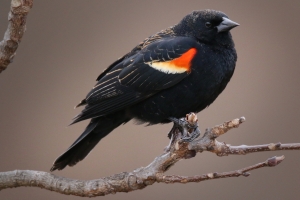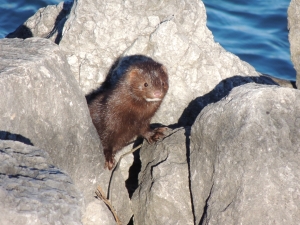

Rob Dragani
Rob is an Environmental Educator at the Urban Ecology Center. He is also a master’s student at the UWM School of Freshwater Sciences. Anglers might also recognize him as one of the creel survey technicians with the Wisconsin Department of Natural Resources. In his free time, Rob enjoys spending time in nature, whether it be working on photography, fishing, birding, camping, hiking, etc. His goal is to help inspire empathy for wildlife & nature through his work and photos.
Spring Phenology Challenge
Spring is right around the corner, and it’s one of the most fun times of the year for phenology. As the snow melts and plants start sprouting, you can almost feel spring approaching in the air. Some animals, such as the Eastern chipmunk and the Blue Spotted Salamander, are waking up from their winter slumbers while others are returning from their annual southern migrations. Each year, we at the Urban Ecology Center have a staff competition to see who can observe the first Red-winged Blackbird at one of our parks. The males migrate back to the area in late winter, followed by the females a few weeks later. You could even beat our staff this year! Listen for their characteristic “VOTE-FOR-MEEEEE!” call. We also have challenges for documenting the first Mourning Cloak butterfly, Eastern Chipmunk, and Butler Garter snakes.
The American Mink (Neovison vison)
The mink is a squirrel-sized member of the mustelid family that includes the otter, wolverine, badger, fisher, and other weasels. Also, a member of this family is their domesticated European cousin, the ferret. Like the otter, the mink is an excellent swimmer, rarely seen far from water. Also like otters, minks are particularly playful and extremely curious. Like many weasels, they like to enter and travel through burrows and cavities but rarely dig their own. Minks have extremely fast metabolisms and are seldom seen sitting still, constantly looking for their next meal. They are such effective hunters that they will frequently “cache” their kills and save them for later. Caches have been found with as many as 50 fish stored. Minks also have the misfortune of being born with extremely soft, silky dark brown fur that humans have coveted for as far back as our history with these creatures goes.
Copyright © 2023 The Urban Ecology Center




